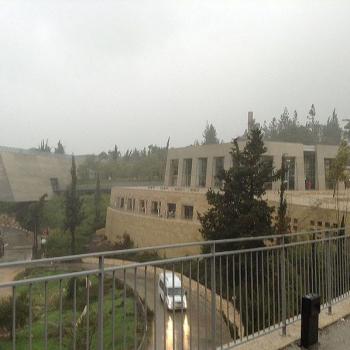
These were astonishing conquests, rapid and seemingly without end, and it was not only the ancient Christians who saw them as fortunate (indeed, perhaps even as God-ordained). Parley P. Pratt was enthused about them as well. “Now,” he said,
if we take Mahometanism during those dark ages, and the corruptions that are so universally prevalent over the earth, and the idolatrous systems of religion, falsely called Christianity, and weigh them in a balance; with all my education in favor of Christian nations and Christian powers, and Christian institutions, so called, with all my prejudices of early youth, and habits of thought and reading, my rational faculties would compel me to admit that the Mahometan history and Mahometan doctrine was a standard raised against the most corrupt and abominable idolatry that ever perverted our earth, found in the creeds and worship of Christians, falsely so named.[1]
Umar was assassinated in 644 A.D. and was succeeded by a gentle if perhaps weak old man named Uthman.[2] He was assassinated, in turn, in 656 A.D., and finally it was Ali’s turn to assume the caliphate. It seemed for a while that the dreams of the Shiites had come true, or at least that they were about to do so. But conditions were terribly unstable, and Ali himself fell at the hands of an assassin in 661 A.D. The Shiites look back to the days of Ali as their golden age. But the Sunnis, too, look back to roughly this period as the time when sincere, believing Muslims ruled over a vast empire. For them, the period from 632 to 661 A.D., the time of Abu Bakr, Umar, Uthman, and Ali, is the age of the four “orthodox” or “rightly guided” caliphs. It was followed by a period of relative darkness. Each faction of Islam, both Sunni and Shiite, began to dream of a return to the heady days of the seventh century, when a prophet walked the earth and when his successors conquered much of the known world and began the climb to a pinnacle of wealth that the Arabs had never before known. But that time still has not returned.
Dominion over the Arab empire now came into the hands of a family known as the Umayyads, descendants of the very leaders of Quraysh who had opposed Muhammad during the Prophet’s lifetime. Now it was not only the Shiites who felt alienated from power, but the pious Sunnis as well. The Shiites felt that alienation more intensely, no doubt, because, as a group deeply resentful of the ruling authorities, they came in for special attention from the government. And their leaders, the descendants of Muhammad and Ali, were an especially visible set of rivals to the throne on whom the Umayyads kept special watch and whom they occasionally murdered.
History, however, is not the main focus here, so we must let many of the details pass. Now, it is necessary to look more closely at the nature of the new religion, Islam.
[1] Journal of Discourses 3:40. Elder Pratt is probably a bit too enthusiastic (and too critical of mainstream Christendom). His comment on the following page certainly is: “So far as that one point is concerned, of worshipping the one true God under the name of Mahometanism, together with many moral precepts, and in war acting only on the defensive, I think they have exceeded in righteousness and truthfulness of religion, the idolatrous and corrupt church that has borne the name of Christianity.” I suspect that Elder Pratt was acting on the basis of something like the old Arabic proverb, “The enemy of my enemy is my friend.” Protestant despisers of the Latter-day Saints in his day loved to compare the Restoration to allegedly pagan and sensual (i.e. polygamous) Islam. They also liked to compare the two “false prophets,” Muhammad and Joseph Smith. In response, certain Latter-day Saints seem to have felt that, if their “Christian” enemies hated Muhammad and Islam, well then, neither Muhammad nor Islam could be all that bad. They were right, of course, that Muhammad and Islam are not altogether evil, which was a fairly revolutionary thought for nineteenth-century Americans. But they went too far. The Muslim doctrine of God is far different from that held by the Latter-day Saints. And Arab Muslim armies—particularly after the death of the Prophet—often fought offensively as well as defensively.
[2] Pronounced roughly “Oth-maan.”












